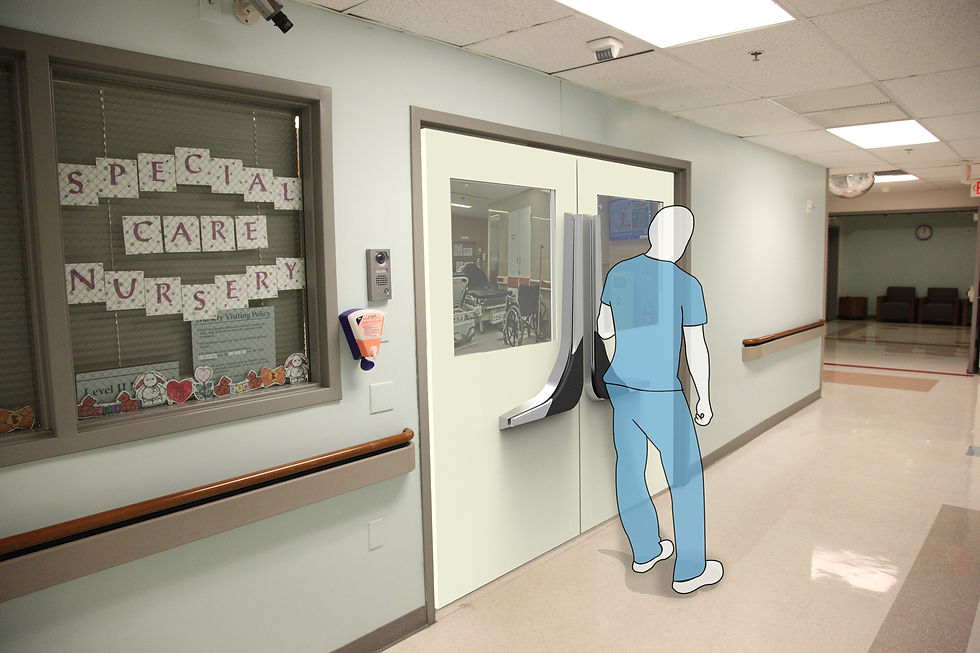
Doorknob
How do hospital doors affect personnel and patient flow? This was the focal question as our team explored behavioral and physical interactions with doors in hospital settings. Upon discovering a design opportunity, we created a series of empathy exercises and designed a more encompassing and functional 'door bar' for hospitals.
Collaborators: Sarah Folger, Urszula Warszawa, and Erik Reiblein | Time Frame: February - May 2014
Identifying a problem
At BC Children’s Hospital, users modified this door handle by securing foam with tape in the corners. They did this to increase comfort on the body when pushing doors open.

How can we implement changes seen in post-design to create a more sanitary, comfortable, and permanent solution that addresses all users?
understanding the situation
Our team focused on the journey of pediatric patients being transported from their room to the operating theatres. Typically, nurses and other medical assistants initiate the transportation of the patient in such situations. Throughout this process, users will encounter at least a set of double doors. We observed that some of the main factors during this journey are: physical limitations, time, and emotional effect.

1

2

3

4

5

6
stakeholders
Doctors move quickly through hospitals in order to see patients and update charts. They mostly use their HANDS and ARMS to open doors. Other factors: anxiety, stress, and focus.
Nurses often have their hands full with medical equipment, so they mainly use their ARMS, ELBOWS, HIPS, and LOWER BACK to open doors. Other factors: efficiency and speed.
Patients are usually transported in gurneys. They tend to be aware of procedures, causing them to be hypersensitive to NOISE and MOVEMENT. Other factors: anxiety, fear, and confusion.



Doctors
nurses
patients
Empathy exercises
Our team created a series of empathy exercises by role playing the personas of doctor, nurse, and patient. Through these exercises, the team was able to better understand the context.



the design
The pushbar aims to facilitate users with a more comfortable and approachable interaction with double doors. The design uses rubber and steel. The rubber portion promotes comfort. Steel is used in other areas for ease of cleaning and familiarity.




